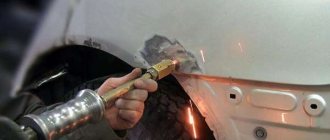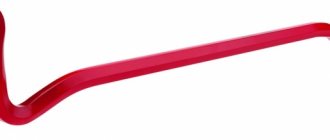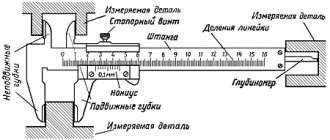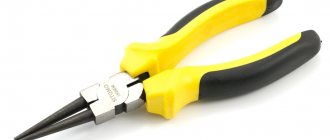In the Russian climate, every winter we face snowfalls and blizzards. Snow and ice covering roads, driveways and sidewalks impede the movement of vehicles and cause road accidents and injuries to people. Snowfalls sometimes lead to real collapse.
For the winter maintenance of highways and city roads, many different snow removal equipment are produced.
Purpose of snow removal equipment
Snow removal equipment is used by specialized road services, utility and management companies, owners of private houses and suburban areas.
The machines remove snow from highways, city streets, intra-block roads, areas of residential buildings, industrial enterprises and public buildings.
Different types of special equipment are designed for specific types of work.
According to the scope of application, snow removal machines can be divided into:
- main lines;
- urban;
- airfield;
- railway;
- household
Snow blowers are purchased by owners of football fields and sports clubs, skating rinks, and outdoor training grounds.
It is important to choose a machine that is optimally suited for specific work, taking into account the dimensions and characteristics of the territory and the necessary technical parameters.
How to transport the device
Transportation of a snow blower to a new location is usually carried out in a trailer due to its rather large dimensions. It is quite possible to lift non-self-propelled models and place them in a trailer on your own, but vehicles with a self-propelled propulsion system are not easy to lift even with two people. In such a situation, it is recommended to use a lift, or, if one is not available, a ladder, to roll the snow blower onto the trailer. When transporting, you must carefully secure the equipment; you cannot transport it by holding it with your hands. On bumps or turns, the snow blower can easily tip over and crush the person holding it.
Snow blowers are equipment that significantly makes life easier for owners of country houses and owners of their own plots. In order for the device to serve for a long time, you must follow the rules for its use and treat it with care during storage and when preparing for use. Under such conditions, the snow blower will last for many years and will not require significant costs.
Types of snow blowers
Snow blowers are special machines equipped with devices for raking, loading or throwing away snow and ice.
Based on the type of working mechanism, snow blowers are divided into six main types:
Rotary
The active working body of rotary snow blowers is mounted on a self-propelled chassis of trucks or tractors. Such machines are used for clearing highways, city roads, airfields from dense and bulky masses, removing avalanche and drifted snow from mountain roads, and removing snow banks.
The working parts of rotary machines are:
- Plow-rotor , consisting of a blade, a lifting mechanism, a coupling frame, push rods and bladed rotors.
Using a plow, the mass of snow is cut out and moved along the inner lining of the body to the rotor, which throws the snow to the side. Rotary plow snow blowers are used mainly for removing loose, low-density sediment.
- Rotary augers , consisting of a bladed rotor and a screw feeder with one, two or three augers. Augers cut snow from the massif, and the rotor throws the crushed mass to the side of the road. Such machines are suitable for cleaning medium-density masses and do not cope well with hard, frozen snow.
Rotary snow blower
- Milling-rotor, consisting of a milling feeder and one or two bladed rotors mounted in one housing. The milling feeder is a large-diameter drumless milling cutter in the form of screw cutting elements. The cut snow moves to the rotor, which throws it to the side. Milling rotary units successfully cope with dense compacted snow and ice.
- With a combined working body, which is a hollow drum with right and left screw cutting elements located inside moving towards each other.
When the drum rotates, snow is cut out of the massif. Moving through the cavity between the cutting belt and the walls of the drum, it falls into the pocket formed at the point where the turns close.
Compact machines can develop snow of any density, but cannot throw it far and have low productivity.
The equipment of rotary snow blowers is mounted on the base of cars, tractors or tractors. Based on the type of chassis, rotary machines are divided into pneumatic wheels and tracked ones.
According to performance there are:
- light - up to 200 tons/hour;
- medium - up to 1000 tons/hour;
- heavy - over 1000 tons/hour.
Based on their throwing range, medium and heavy vehicles are divided into:
- road - up to 18 meters;
- airfield - over 18 meters.
There are machines with one common engine or two separate ones - drives of working parts and travel.
Snow removal with loading Snow removal from the territory Snow disposal Balashikha
Plows
The most common snow blowers designed for removing snow from roads and railway tracks.
Basic elements of plowing equipment include:
- A moldboard or wedge-shaped plow that throws snow on one or both sides as it moves. Blade angles may vary depending on operating conditions.
- Skis or rollers for adjusting the working height of the plow and protecting the road surface.
- Suspension with a pushing frame on which work equipment is hung.
- A lifting mechanism that brings the device into working position.
- A safety system that provides shock absorption for attachments.
There are different devices with shearing or throwing action. The dimensions of the plow equipment are selected based on the width and power of the vehicle. The equipment may have additional blades that move snow off the road surface.
The thickness of the shear layer can be up to one and a half meters. Plowing equipment can be installed on various chassis:
- trucks and tractors;
- SUVs and loaders;
- pickups and mini-tractors;
- ATVs and other small equipment.
Control of snow plows can be:
- Hydraulic - connected to hydraulic pumps of trucks and tractors. Hydraulic equipment can be controlled from the vehicle cabin.
- Electric - changing the position of the knife using electric motors or powerful gearboxes.
- Mechanical or manual - used to adjust the height and tilt of plow equipment on light, low-power machines.
Plow machines with hydraulic equipment are much more efficient and productive than models with electrical and mechanical drives.
Ram
The machines are designed for clearing snow from railway tracks. They are a reinforced car made of durable steel, equipped with a powerful blade of a characteristic shape.
The basis of the car is a special frame mounted on two biaxial bogies. An automatic coupler runs along the axis of the car, allowing it to navigate turns and prevent the cars from derailing.
Railway ram snow blower
Jet
Snow blowers are designed for removing snow at airports, in the territories of railway stations and depots, turnouts, in tunnels, and station mouths.
The secret of such machines is in hot gases with a temperature of about 300°C emanating from the nozzle.
Jet snow blowers first blow and then melt the snow.
The main unit of the machine is a turbojet engine installed on the platform of a truck, railway car or handcar. Hot air is blown through the engine nozzle, blowing away, melting and evaporating the snow.
Jet snow blowers mounted on truck chassis are used on airport runways.
Jet snow blower.
Paws
They are self-propelled snow blowers, with paw feeders, conveyor belts and drive mechanisms for working units installed on the chassis.
As the machine moves, a sharpened steel shovel located at the front of the machine cuts snow and loads it into the shovel. Two paws on rotating disks alternately grab the snow and feed it into the chute of the scraper conveyor, along which the load moves into the dump truck body.
Combined
To perform a wide range of tasks, various variations of domestic and foreign combined road machines for urban and municipal services are produced.
The following configuration options are possible:
- auger snow blower, sand spreader and container for liquid reagents.
- double-sided blade, center brushes and sand spreader;
- front and center blades and sand spreader;
- dump truck with front double-sided blade;
- sand spreader, rear high-speed and center blades.
If necessary, universal machines can be reconfigured to perform other functions. Combined road machines are an invariable attribute of city utilities and management companies.
Snow blower spark plug maintenance
On some models, you may have to unscrew the control panel to get to the spark plug. Grasp the cable and disconnect the shoe from the spark plug. If necessary, check and replace it. Reinstall the control panel if you removed it.
Grasp the cable and disconnect the shoe from the spark plug.
Loosen the spark plug with a socket wrench, then unscrew it by hand; clean and set the gap. To check the spark plug and other parts of the ignition system, first drain the fuel tank (step below). Insert the spark plug into the boot and return the controls to their original position. Wear a heavy rubber glove, hold only your boot, and touch the spark plug thread to the exposed metal portion of the engine block as far away from the spark plug hole as possible.
Checking the snow blower spark plug.
Pull the starter cord 2 or 3 times. A bright, clicking spark on the spark plug means that the parts of the ignition system are working properly. Otherwise, repeat the test with a new spark plug. If there is still no spark: check the electronic ignition module (EMM).
Municipal snow removal equipment
Municipal equipment is designed for cleaning courtyard areas of multi-story buildings, intra-block driveways, sidewalks, parks, and public gardens.
The main problem that arises when clearing yards and sidewalks of snow is the impossibility of using large, most efficient snow removal equipment.
Urban utilities are equipped with mobile machines suitable for urban conditions:
- rotary or plow cleaners on the chassis of small cars or tractors;
- paw snow loaders;
- combined units with a set of different functions;
- two-stage gasoline snow blowers.
To combat ice conditions, liquid or solid chemical reagents, mixtures of industrial salt and sand are used to melt ice or increase the adhesion of car wheels to the road.
According to existing standards in Russia, utility services are prohibited from accumulating snowdrifts in courtyards, along the sides of intra-block roads and sidewalks. Snow must be promptly transported to snow melting stations or landfills.
Combined snow blower
Cars for the city
The maintenance of city roads differs significantly from the maintenance of suburban highways.
High intensity and heterogeneous traffic flow, congestion of sidewalks and vehicle stops dictate increased requirements for street cleaning.
Snow removal work must be carried out simultaneously throughout the city, which requires the presence of a large number of high-performance road equipment.
There are special requirements for cleaning city roads:
- Creating minimal disruption to public transport. The speed of snow removal equipment when clearing roads should be close to the speed of traffic flow.
- The anti-icing reagents used and the disposal of snow from city streets should not have a negative impact on the environment.
- When raking snow masses into snow banks, it is necessary to remove snow as soon as possible at all intersections and road junctions, public transport stops, and exits.
The speed and quality of road cleaning is increased by the simultaneous use of several units of equipment, lined up sequentially, across the entire width of the roadway.
If snow is practically not removed from the highways and is moved to the side of the road, then from city streets, courtyards and squares it must be immediately transported to snow dumps or snow melting stations.
After snowplows pass through city streets and courtyards, shafts remain that must be removed within the time limits specified by GOST R 50597-2017 “Roads and Streets”, instructions, rules and guidelines of local authorities.
Table 1. Main regulatory deadlines for removing snow and ice formations on city roads and highways.
| Type of formations | Road category | Time frame for elimination |
| loose snow | expressways, highways, city roads with controlled traffic | within 4 hours (up to 3 hours - rural) |
| highways, transport and pedestrian | within 5 hours, (up to 4 hours - rural) | |
| courtyard driveways, local roads | within 6 hours | |
| one way roads | till 12 o'clock | |
| Ice | expressways, main roads, city roads | within 4 hours (up to 5 hours - rural) |
| transport, pedestrian and courtyard passages | within 5 hours | |
| residential roads | within 6 hours | |
| one way roads | within 12 hours |
For loading snow, rotary snow loaders are used, with a guide casing for raking and loading snow shafts. The snow blower uses augers to crush the snow captured by the bucket and feed it to the rotor impeller. Through the guide casing it is thrown into the dump truck standing on the side.
A rotary snowplow and a dump truck occupy two lanes at once, creating traffic congestion.
Snow blowers that are capable of loading trucks following the loader in one lane are considered more convenient equipment for city roads.
The length reserve of the conveyor boom allows loading through the truck cabin in the direction of travel.
Paw snow blower
Comparative characteristics (table)
| Power type | pros | Minuses |
| Ability to work at sub-zero temperatures (down to -20 °C) | Large dimensions and weight of the structure | |
| Petrol | Autonomy and uninterrupted operation up to 4 hours without additional refueling | Requires a lot of storage space |
| Engines with a power of about 15 hp. With. capable of clearing even two weeks of snow | High price and high cost of service | |
| Affordable price (compared to gasoline models) | Only suitable for small areas | |
| Electricity | Compact size, convenient storage | Minimum number of functions (no heated handles, one speed, headlights for cleaning at dusk need to be purchased separately) |
| Lightweight design (approx. 15 kg) | Only effective when clearing fresh snow |
Snow removal on the slopes
The technology for cleaning country roads differs significantly from cleaning city streets.
Highways are characterized by long distances and significant volumes of work, the cleaning of which must be carried out promptly, without stopping the movement of equipment.
What is needed here are powerful and high-speed machines capable of not only shoveling snow, but also throwing it far to the side of the road.
Machine for clearing highways
Railway technology
The structure of the railway tracks does not allow the use of conventional road snow removal equipment.
To clean them use:
- snow removal trains;
- locomotives or self-propelled platforms with special snow removal equipment;
- attachments for shunting locomotives, standard cars or platforms.
Plows, rotary augers, pneumatic blowers or brush snow blowers are used as attachments. On railway platforms and stations, the snow mass is collected in wagons and transported to the disposal site.
Outside railway stations, snow is usually dumped from the tracks, where it melts as the weather thaws. Particular attention is paid to turnouts and stages. These areas are cleaned using mounted brushes or treated with chemicals.
Cleaning of railway facilities is strictly regulated by instructions, orders and rules approved by JSC Russian Railways and the Ministry of Railways of the Russian Federation.
When cleaning railway tracks, it is important to ensure that the snow removed from the track does not fall on the tracks passing nearby.
Preparation for conservation and after its completion
Preparing a snowblower for storage in warm weather includes a number of procedures.
- All bolts and nuts must be treated with engine oil. Fill the cables with WD-40.
- The engine must be started and kept running until all the fuel runs out.
- After this, you should leave the device with an open gas tank for a day. In this case, you need to cover the hole with a clean rag (to prevent debris from getting inside). During this time, the snow blower should be kept in a well-ventilated area. Within a day, all the gasoline will evaporate, and there is no fear of an explosion or combustion of its vapors.
- After performing the above steps, you need to remove the spark plugs and pour 10 ml of oil suitable for this engine into the cylinder.
Preparation after the summer is not much different from the first start-up. In addition to the actions described above, it is recommended to change all friction rings and belts: as practice shows, their service life does not exceed one and a half years. It is also useful to change the oil in the gearbox and engine.
Snow removal at airports
Increased demands are placed on the condition of the surface of runways and taxiways at airports.
To clear them of snow, equipment is used that is capable of cleaning large areas in the shortest possible time and with high quality:
- plow-brush machines;
- auger snow blowers;
- reactive units.
Large-sized airfield vehicles are equipped with turbojet blowing devices, special brushes, floating dumps, and magnetic separators.
The equipment is mounted on powerful chassis KAMAZ, KrAZ, MERCEDES, MAN, etc.
To remove a thin layer of snow and ice, liquid or solid deicing chemicals are used.
Work to clean up airport areas should be carried out as quickly as possible to accommodate the gaps between takeoffs and landings without interfering with aircraft.
Airfield snow blower
When to buy
We recommend purchasing a snow blower in winter , immediately after the first snow falls, since you can return or exchange a fully functional unit that you didn’t like within 14 days .
This is written in Article 25.1 of the PPA, so the seller does not have the right to refuse you. If you purchase a snow thrower long before the snow falls, you will not be able to check its operation and, if necessary, exchange it for a more powerful one or one that suits your conditions.
We also recommend that after choosing a specific model, type its name on the Internet and compare offers. This will help you find stores that offer this device on the best terms, and also offer various promotions or discounts .
Household snow blowers
Cleaning yards, suburban areas and gardens is a rather labor-intensive and physically difficult process, especially during heavy snowfalls, when precipitation has to be removed daily.
If in small areas or in front of the entrances of houses it is quite possible to cope with the help of hand tools, then in large areas special equipment is needed.
Device
Household snow blowers consist of the following main components:
- gasoline or electric engine;
- steel or aluminum frame;
- housings made of impact-resistant plastic;
- wheels or tracks;
- screw and rotor;
- gutter or socket;
- panels and control handles.
Modern manufacturers equip snow blowers with various devices for more comfortable operation: headlights, electric starters, heated handles, adjustable angle of the socket for throwing snow.
Augers are made of plastic, metal or rubber. The most effective option is steel augers with rubber scrapers. The engine is started using a manual or electric starter.
As the machine moves, the screw auger captures the snow mass, moves it onto a rotating rotor, which crushes and throws the snow to the side through the bell.
Snow blower device
Classification
Compact, easy-to-operate vehicles are produced on tracked and wheeled chassis.
By weight, devices are divided into:
- light - up to 40 kg;
- medium - up to 90 kg;
- heavy - over 90 kg.
There are three types of design:
- Single-stage devices, the main working tool of which is a spiral-shaped auger that collects and grinds snow. Snow is ejected through a deflector located directly above the auger.
The snow throw range of a single-stage machine is from four to eight meters.
- Two-stage rotary auger snow blowers consist of an auger and a rotary impeller. The most common household machines capable of collecting, crushing and throwing snow up to a distance of 15 meters.
- Three-stage snow removal equipment also belongs to the rotary auger type. It differs from double-rotor ones by the presence of another screw located perpendicular to the main one. The machine is designed for clearing large snow drifts.
If you need to clear snow from paths and the surrounding area, you can take a single-stage model. Two-stage - popular in both the private and public segments. Suitable for removing compacted snow.
Three-stage equipment is mainly used by utility companies and management companies. The machines are used for cleaning large areas of urban courtyards or suburban real estate areas.
Table 2. Comparison table of snow blowers.
| Options | Self-propelled snow blowers | ||||
| electric | 1-stage | 2-stage | 3-speed | ||
| Snow depth (cm) | 10 | 15 | 45 | 60 | |
| Snow type | light loose | light loose | wet heavy | caked | |
| Auger width, cm | 30-50 | 50-60 | 60-110 | 60-90 | |
| Knockback range | Up to 8 m | Up to 10 m | Up to 15 m | Up to 15 m | |
Non-self-propelled electric snow blower
Based on the type of drive, household devices are:
- Electrical. Small, lightweight electric machines are usually equipped with motors up to 2.5 kW. Connected to the mains or powered by batteries. Available only in single-stage version.
The advantages of electric snow blowers include ease of use, quiet operation and no emissions.
The disadvantage is the limited operating radius when connected to the mains and the short battery life, requiring constant recharging.
- Gasoline. More powerful and heavier than electrical devices. They are distinguished by a high margin of safety.
Do not depend on the availability of electricity sources. Can work in remote areas. Available in one-, two- and three-stage versions.
Gasoline snow blowers are equipped with a reliable metal auger and a carburetor engine.
Snow blowers can be equipped with an automatic control system that can regulate engine speed, direction, range and height of snow throw.
Almost all gasoline snow blowers are equipped with a manual transmission and have one or more speeds.
Light snow cover is easily removed at maximum speed. Clearing large snowdrifts is best done at reduced speeds.
Self-propelled gasoline snow blower
Advantages and disadvantages of self-propelled vehicles
The main advantages of self-propelled vehicles are:
- ease of control that does not require significant effort;
- easy movement on uneven roads and rough terrain;
- the ability to throw snow over significant distances;
- long production life and high wear resistance.
Self-propelled machines have more power and high speed. The equipment easily copes with trampled, compacted and ice-covered snow.
The disadvantages of household self-propelled snow blowers include large dimensions that require a certain amount of storage space and the possibility of harmful exhaust from gasoline-powered machines.
Starting the auger
The first start of the auger can be carried out simultaneously with or after checking the motor. To do this, the auger operation switch is switched to operating mode. In this state, it needs to be held for 5-10 seconds, during which you need to make sure that the rotation occurs without jerking and that the auger generally moves. If this is not the case, then it is necessary to adjust the length of its cable.
The same procedure will be required if, after stopping, the auger does not stop completely, but trembles a little. The entire process of adjusting the cable is described in detail in the instructions, and different manufacturers may do it differently.
The next important stage in the operation of the auger is checking the gearbox. To do this, you need to fix the auger activation lever and let the equipment run idle for about 2 hours. After stopping, you need to try the gearbox. It should be barely warm or cold, but if it gets hot, then there is a defect in it, and the likelihood of an early breakdown is very high.











